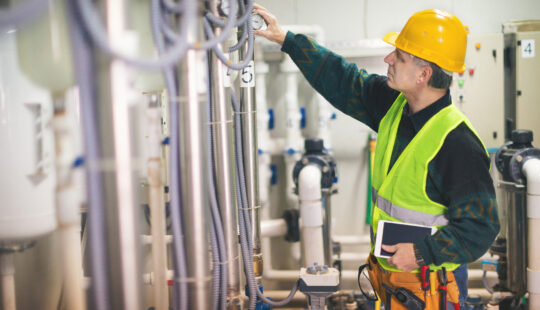In the summer of 2022, people sought to make up for vacations lost owing to the pandemic, and the phenomenon of ‘revenge travel’ peaked. The resurgence in demand for air travel should have meant good news for the industry, but an acute labor shortage – remember, 2.3 million aviation jobs were lost during the pandemic – meant that airports and airlines were scrambling to fill the vacuum and avoid flight cancellations.
The aerospace and defense (A&D) industry is battling similar woes, with 70% of companies in the sector experiencing an increased turnover. The loss of skilled workers notwithstanding, delays in hiring, training, securing worker clearances, and rising costs translate to challenges in keeping production up to match demand. Much like the civil aviation workforce that moved on, 75% of the labor pool in A&D left for career advancement, while 31% departed for a better work location or for a remote-working opportunity.
While enticing the reluctant workforce to return with higher pay and perks remains an option, the industries are fast realizing that amid the labor and cost-surge crisis, innovations in production planning and creating efficiencies in throughput processes are now paramount.
Bridging Silos with Automation
Manufacturing efficiency isn’t always achieved until the production of the 100th unit. To overcome this, intelligent software can be used to run virtual recreations on simulation capability tools. Everything from the projected manufacturing assembly process, field capability and configuration process, flight operations, and maintenance performance can be simulated in a virtual world via a digital twin, even before the first cutting or bending of sheet metal. This way, any aircraft or engine part that is virtually simulated is manufactured efficiently right from the first unit produced.
Similarly, with robotic process automation (RPA), a digital thread can be created to bring information from the upstream engineering departments and auto-generate work instructions to provide seamless information routing to the downstream manufacturing departments. With the SAP Signavio portfolio, organizations have the power to design, simulate, and monitor processes to help ensure that transformation value is part of the company’s DNA. This intelligent enterprise philosophy helps in minimizing the handover time between processes. As a result, hitherto system silos can be negated to reduce the overall throughput time. Also, short-term planning involving supply chain, parts, and tools can be better optimized to match resource availability.
While RPA can create process efficiencies, robotic interventions are already improving the manufacturing process.
Replacing Skilled Labor with Technology Augmentation
With Industry 4.0, facilities across the industrial landscape are introducing a digital, end-to-end workflow with additive manufacturing. In Q2 last year, the Association for Advancing Automation reported the ordering of over US$580 million worth of robots, up 25% from 2021. In the aerospace industry, robots are mastering the drilling and fastening function with a higher degree of accuracy than a real person and saving time along the way.
Likewise, robotic systems applying sealant to aircraft structures is resulting in 20% time-savings. Robots are also being used for quality assurance during manufacturing, inspection of active-duty aircraft, welding, painting, and polishing. While robots have achieved 95% time-savings in aircraft washing, welding automation is expected to fill the nearly 400,000 welding vacancies anticipated in the U.S. by 2024.
With organizations ready to embrace automation, the need of the hour is to simplify adoption. The SAP Warehouse Robotics solution can make integrating robots as easy as plug and play. So, whether it is cross-docking items on trolleys at goods receipt, put-away trolley activities, or even robot-enabled pick-pack-and-pass functions, SAP Warehouse Robotics hands warehouse operators a shot in the arm by supporting an array of scenarios. Quick to implement and with no additional licensing required, the solution can give customers running warehouse management operations an easy, low-risk entry into agile warehouse robotics.
But with time- and cost-savings featuring prominently on the aviation industry’s agenda, how can customer experience stay optimum?
Boosting Customer Satisfaction with Technology Aids
For an industry where small margins contribute to survival, reliance on customer loyalty is huge. Variables like speed and convenience, therefore, play a major role in building customer loyalty. But with labor shortages wreaking havoc, digital transformation is emerging as a viable solution.
For instance, every manufacturer or supplier has their own portal to document their parts or assets, and this causes A&D companies to deploy a manual workforce to track every part coming from hundreds of manufacturer portals. SAP Business Network for Asset Intelligence can help overcome this challenge by provisioning for every asset to reside on a single platform. Now, A&D companies can simply connect their back-end systems to the network, fetch data directly into their systems, gain insight into the transactional data of an asset, and execute maintenance activities. This way, SAP Business Network for Asset Intelligence – a cloud-based network – can limit the use of the workforce and create efficiencies by facilitating secured information exchange between various roles in asset-intensive industries comprising of equipment manufacturers, operators, maintenance providers, and others.
Also, A&D aftermarket providers process invoices from hundreds of airlines or aircraft operators. Their receival, approval, and logging could be automated to better utilize scare resources. Similarly, bots can read customer complaints, assess the degree of importance, categorize them, and automatically forward them to designated departments for speedy resolution.
If the pandemic taught us the importance of supply chain resilience, its aftermath and the evolving geopolitical crisis drives home the significance of innovation in manufacturing to combat sudden spikes in demand amid rising costs and a depleting workforce.
There will always be unpredicted situations. That said, the goal is to achieve a planning stability for all companies in the industry. Reducing risks through additional information and better planning will allow companies to establish a more stable environment with fewer uncertainties. And now, the industries can take heart from the fact that in automation, they have an ally that can turn organizations and the sector at large into intelligent and resilient enterprises.
Learn how automation can drive resilience in the aerospace and defense sector at sap.com/aerospace-defense.
Torsten Welte is global VP and head of Industrial Business Unit for Aerospace & Defense at SAP.



